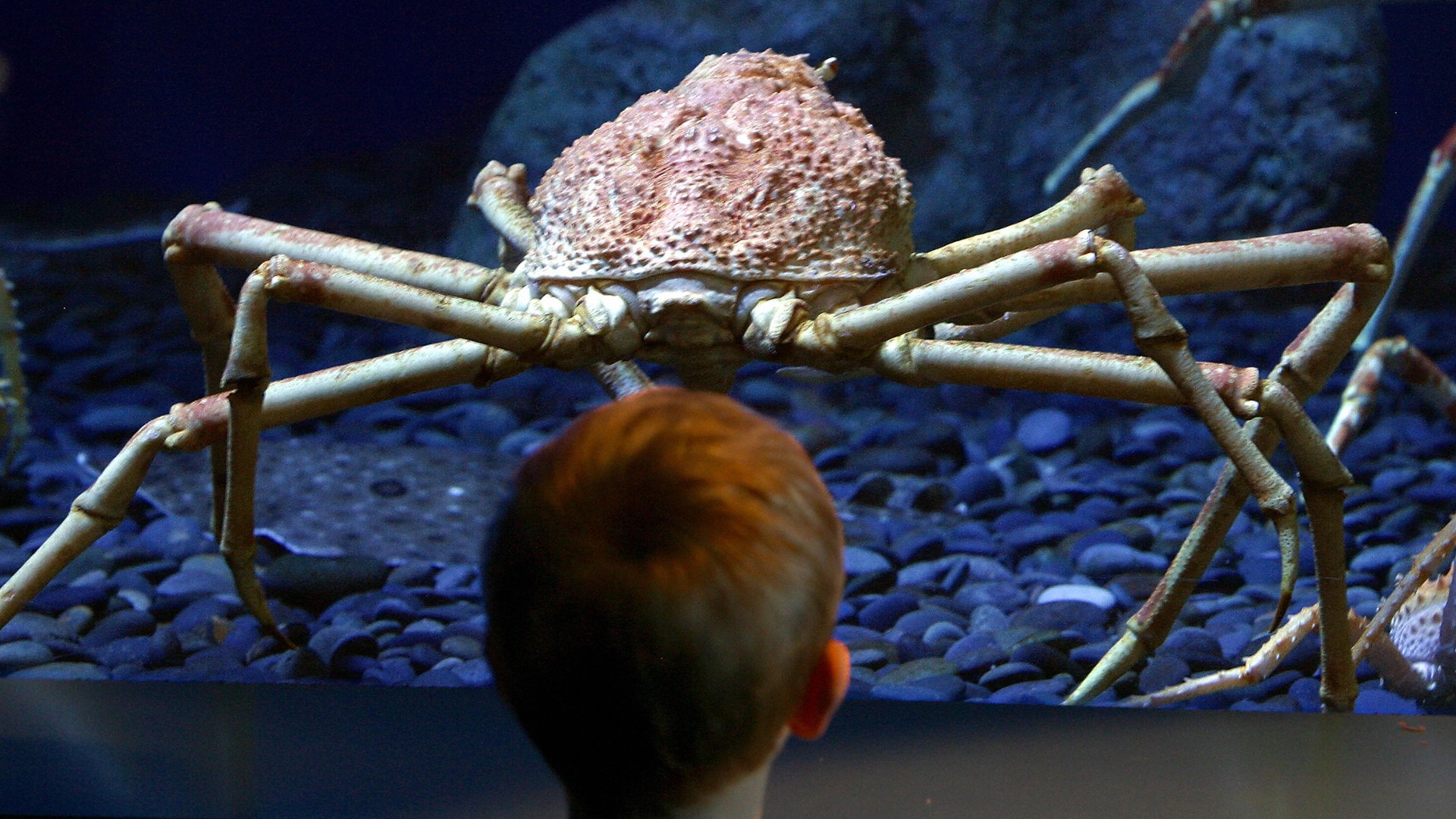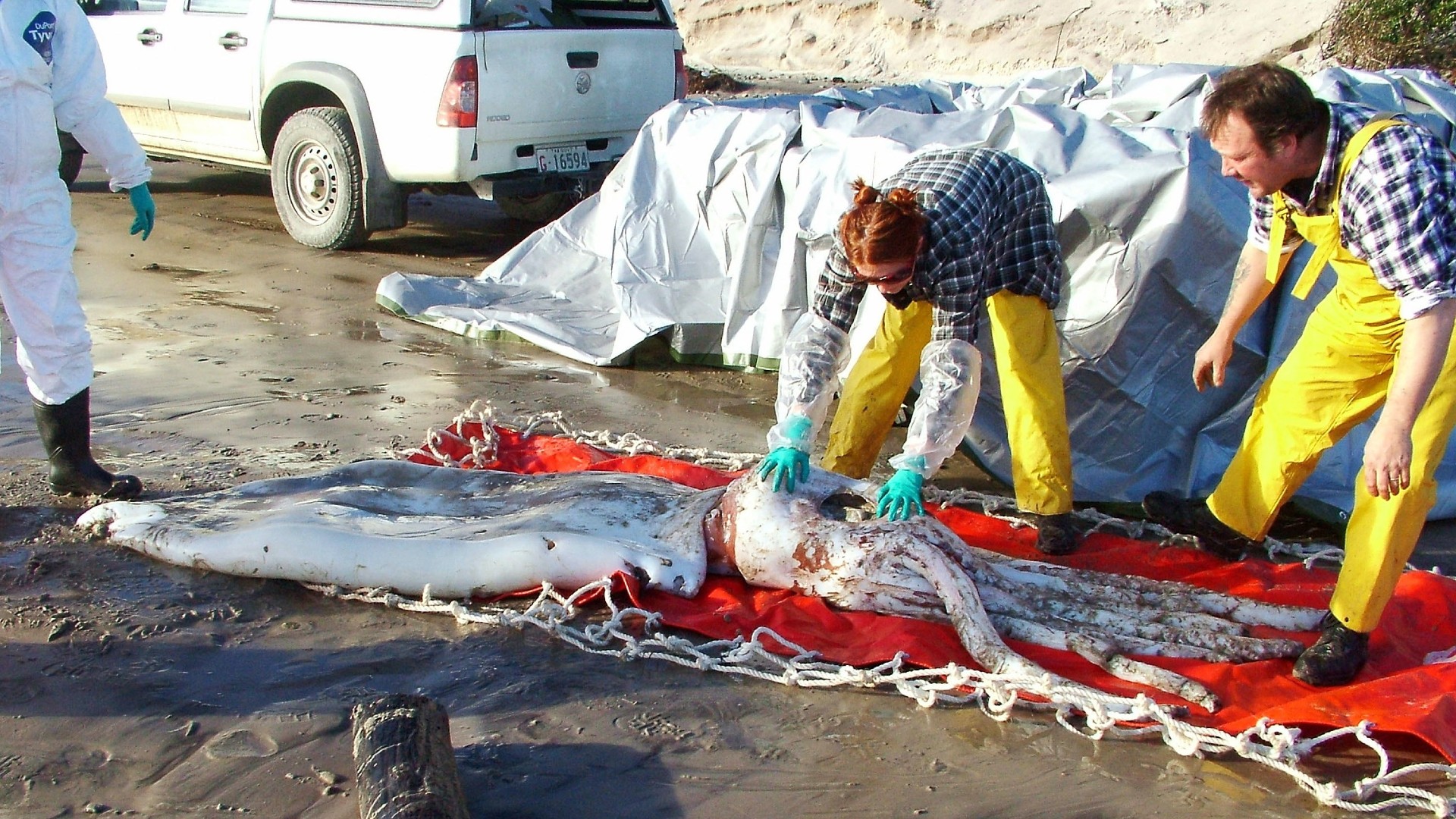Why are there so many giants in the deep sea?
It may be that survival demands it.

In the deepest and coldest parts of the ocean, sea creatures — mainly invertebrates, or animals without backbones — can reach gargantuan proportions. Squids, sea spiders, worms and a variety of other types of animals grow to sizes that dwarf related species around the world. The phenomenon is called gigantism.
The colossal squid (Mesonychoteuthis hamiltoni) in subantarctic waters is about 14 times longer than the arrow Squid (Nototodarus sloanii) common to New Zealand, according to Te Ara the Encyclopedia of New Zealand. Deep in the remote Pacific waters there's a sea sponge the size of a minivan. But what is it about deep and frigid ocean waters that causes creatures to grow so big? It may be that survival demands it, and factors in the extremely cold waters enable it to happen.
In the deepest parts of the ocean, resources are severely limited, much as they are in island ecosystems, according to a study published in 2006 in the Journal of Biogeography. Much of the food originates in shallower waters and only a fraction of that trickles down to the sea depths. When food is scarce, being bigger provides a huge advantage, according to Alicia Bitondo, a senior aquarist at the Monterey Bay Aquarium in California, who works with deep sea species.
Larger animals can move faster and farther to find food or to locate a mate. They have more efficient metabolisms and are better at storing food. So when something like a big carcass drifts down to deeper waters, big predators can consume more and store that energy for a longer time, Bitondo said.
Related: Which animals have the longest arms?
Cold temperatures in the deep sea can also fuel gigantism by significantly slowing down animals' metabolisms. Creatures in this ecosystem often grow and mature very slowly, such as the Greenland shark (Somniosus microcephalus), Bitondo said. This slow-moving shark can grow to be 24 feet (7.3 meters) long and can weigh up to 1.5 tons (1.4 metric tons), but that growth is spread out over a lifespan that extends for centuries. Greenland sharks grow approximately 0.4 inches (1 centimeter) per year and don't reach sexual maturity until they're around 150 years old, Bitondo said. It's due, in part, to a lack of predators in the deep sea that these sharks can live so long and grow so large, she added.
Before humans encountered deep-sea giants, they found them near the South Pole. Near Antarctica, gigantism happens closer to the surface. There are giant sea slugs, sponges, worms, sea spiders and even giant, single-celled organisms chilling in shallower water. They're within scuba range, as shallow as 30 feet (9.1 meters), Art Woods, an ecophysiologist who has studied polar gigantism and a professor at the University of Montana in Missoula, told Live Science. "It might be that there's something about Antarctica that allows [giant species] to live closer to [the] surface," he said. Woods suggested that gigantism in Antarctica could be linked to oxygen supply in the chilly waters surrounding the frozen continent.
Get the world’s most fascinating discoveries delivered straight to your inbox.
In these polar waters, oxygen concentration is high, according to the U.S. Geological Survey (USGS). But, animals in these environments use oxygen very slowly, because cold water temperatures reduce their metabolic rates, Woods explained. Because the abundant oxygen supply far outpaces the animal's oxygen demand, it's possible that growth constraints are lifted. The environment "allows them to develop larger body size and tissue size without suffering oxygen deprivation," he said. While a rich supply of oxygen doesn't necessarily drive sea creatures to become large, it likely allows for it, he said.
But even for polar giants, there seems to be a limit to how big they can grow. In a 2017 study published in the journal Proceedings of the Royal Society B, Wood and colleagues studied giant arctic sea spiders, which can grow to be 12 inches (30.5 centimeters) long, or about the size of a dinner plate. The team found that larger sea spiders had lower oxygen levels in their bodies. Aerobic metabolism depends on oxygen supply, and if it gets too low, tissues will suffer from oxygen deprivation. The declining oxygen level in large sea spiders suggests that something is shifting in the balance of oxygen supply and demand, the researchers reported in the study.
"You imagine they can reach a size where they can't get enough oxygen in," Woods said. "The larger ones are starting to bump up against a limit."
While there are several hypotheses about the different factors that can produce ocean giants, no one is certain about the precise mechanisms that drive dramatic evolutionary changes in body size. "We would say in biology that nothing is ever certain," Woods said.
Originally published on Live Science.

Donavyn Coffey is a Kentucky-based health and environment journalist reporting on healthcare, food systems and anything you can CRISPR. Her work has appeared in Scientific American, Wired UK, Popular Science and Youth Today, among others. Donavyn was a Fulbright Fellow to Denmark where she studied molecular nutrition and food policy. She holds a bachelor's degree in biotechnology from the University of Kentucky and master's degrees in food technology from Aarhus University and journalism from New York University.




